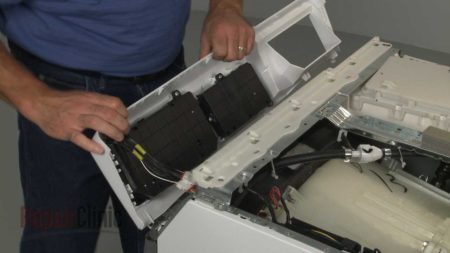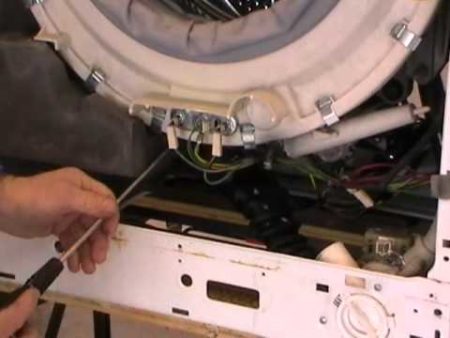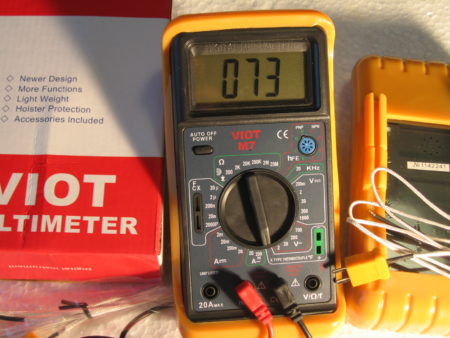A washing machine is a complex household appliance capable of supporting several washing modes for different types of laundry at once. One of its main features is the rapid heating of washing water with the help of PETN. Temperature control is carried out thanks to built-in sensors. If the water is too cold or hot, then you will need to check the temperature sensor in the washing machine and possibly replace it with a new one.
Basic temperature sensors in the washing machine
An automatic machine can be equipped with various types of sensors that monitor. Usually there are several varieties:
- thermistors
- bimetallic;
- gas-filled.
As you might guess, they differ in design features and operating principles. Diagnostics of malfunctions and further repair may depend on this. But first you need to determine if there is a breakdown.
This is usually quite difficult to do, because the water is inside and it is not clear what the temperature is there. One of the signs is the presence of a large amount of steam. This means that the contents are practically boiling inside. You can also identify the opposite effect - if the water drains cold, then the machine practically does not heat anything.
![]() See also - Do-it-yourself troubleshooting of a washing machine tank
See also - Do-it-yourself troubleshooting of a washing machine tank
How to check the temperature sensor in the washing machine?
Usually, with simple washing modes, heating up to 30 ° C is required. In some cases, malfunctions lead to the fact that the sensor does not send a signal to stop the heating element, so the machine continues to heat the water to the maximum possible temperature. In such cases, repairs are needed, because this can ruin the laundry or lead to high energy costs.

The malfunction may lie not only in the temperature sensor, but also in a special programmer responsible for automatic control. The features of the check depend on the specific variety.
Malfunctions of bimetallic sensors are usually associated with mechanical damage or wear, as a result of which the electrical circuit does not open. As a result, the water is brought to a critical boiling point. To check the status, you need to do the following:
- partially disassemble the body of the washing machine;
- remove the wire terminals from the temperature sensor;
- use a multimeter on the contacts when selecting different modes.
The resistance should be the same, but in case of malfunctions it will differ under different conditions.
The gas-filled thermostat is larger than the bimetallic one and includes a copper capillary tube.Typically, a malfunction is due to damage to this freon tube. If the gas escapes, then the temperature is determined incorrectly. The following procedures are carried out for verification:
- partially disassemble the car body to get to the sensor;
- use a multimeter to measure the resistance between the terminals;
- listen if there is a characteristic click when the contacts open when the heating element stops heating.
Washing machine thermal sensors are usually located at the bottom of the tank. Care must be taken not to damage the copper tube during repairs.

Modern washing machine models are equipped with electronic thermistors. They measure resistance using semiconductors. The specific temperature of the water inside the tank depends on the resistance. In addition to this, there is a special controller responsible for the operation of the heating element. Such varieties are considered the most effective, but repairs in this case are more difficult. Usually, only a replacement of the temperature sensor can save.
Such sensors are plastic or metal rods that are attached directly to the heating element block. Their working part is immersed in water to determine the temperature.
What is the resistance of the washing machine temperature sensor?
Depending on the specific model of the machine and the type of sensor used, the resistance will be different. For Zanussi, Electrolux, AEG models at a temperature of 30 ° C, the indicators will be 17-17.5 kOhm, and at 80 ° C - about 2.1-2.5 kOhm. Generally, the higher the temperature, the lower the resistance.

Candy models in normal modes have a reading of 27.0 kΩ. Ardo machines have about 5.8 kΩ. Ariston has 20.0 kOhm. The resistance of Samsung sensors at room temperature is 12 kΩ.
However, this information is not 100% authentic and therefore cannot be used as a basis for immediate repair. It is necessary to accurately establish the characteristics for a specific model and only then carry out a replacement or try to eliminate faults. Details can be found in the machine descriptions or on the home appliance manufacturer's website.
If you take up the repair of the washing machine, you will need to carefully check everything and prepare the tools. However, it is always best to consult a specialist about a specific model.
See also:
- 7 best Indesit washing machines by customer reviews
- 7 best LG washing machines
- 7 best Gorenje washing machines according to customer reviews
- 7 best washing machines before 280 $ according to customer reviews
- 8 best narrow washing machines according to buyers

